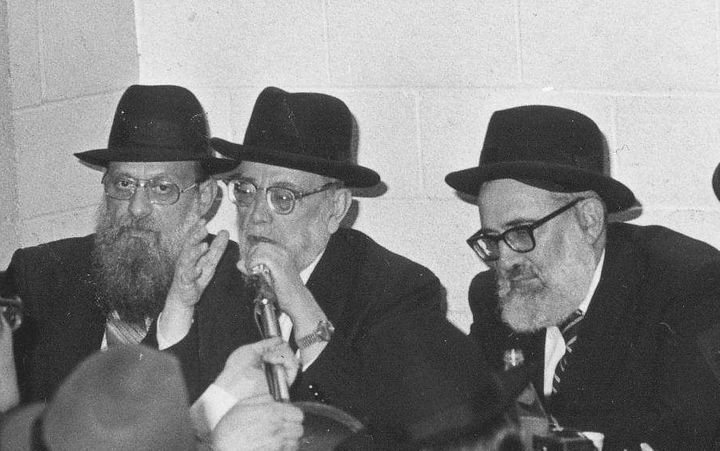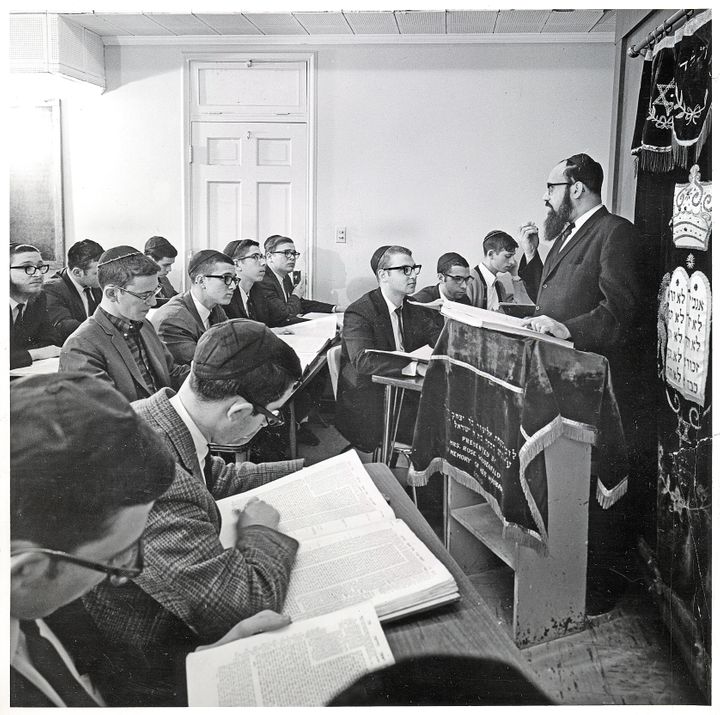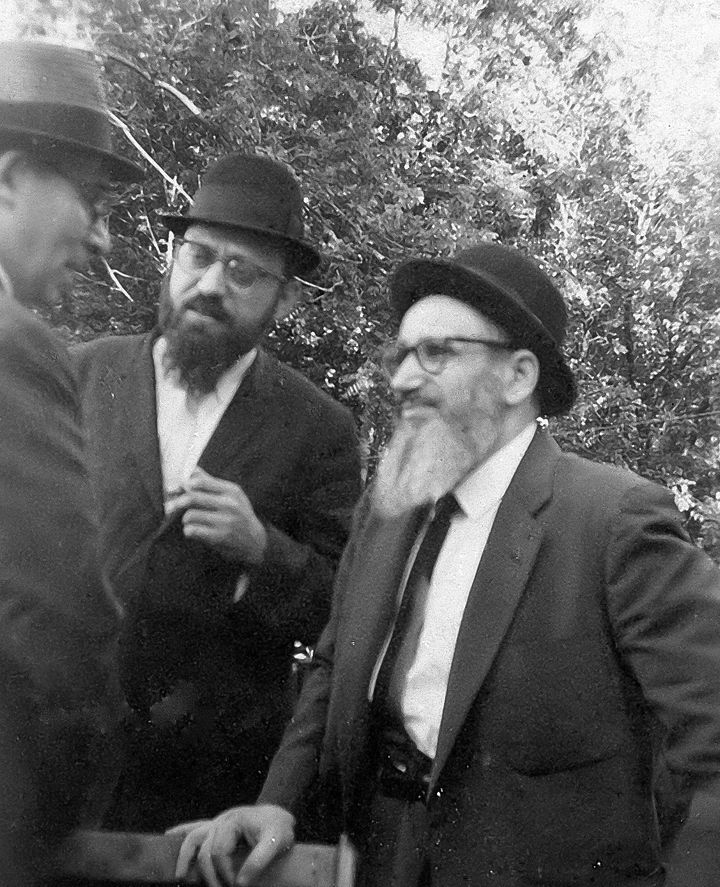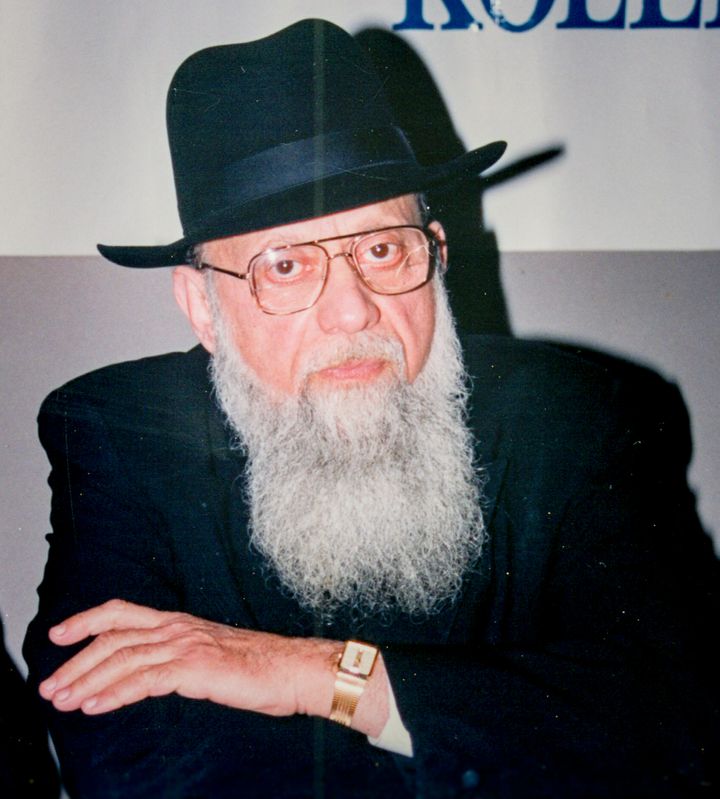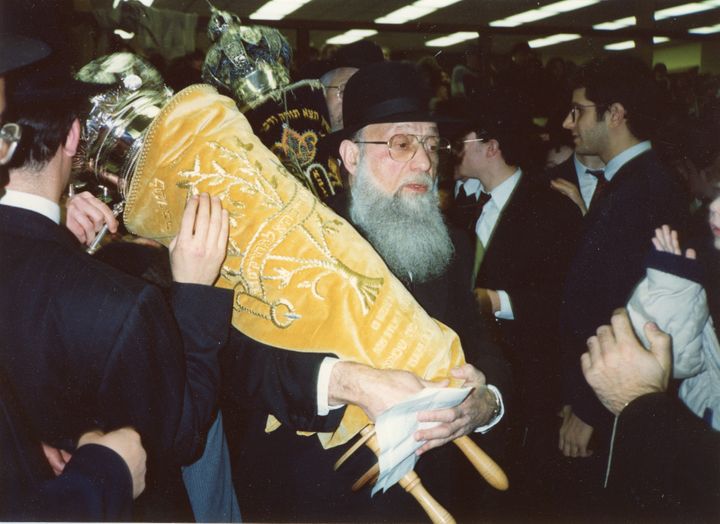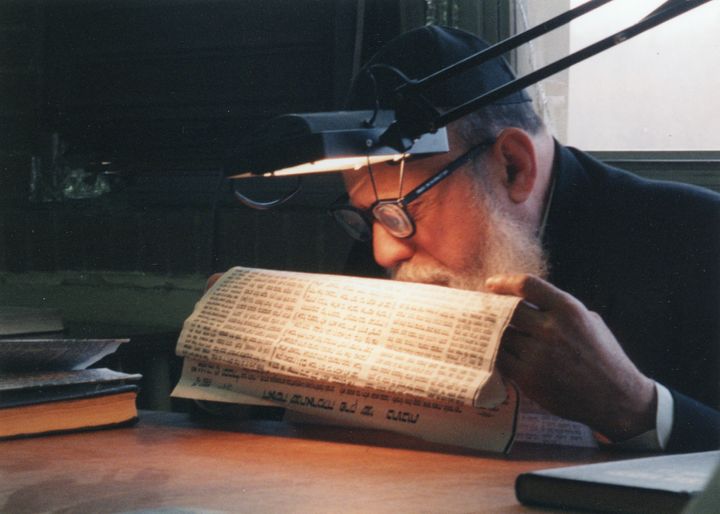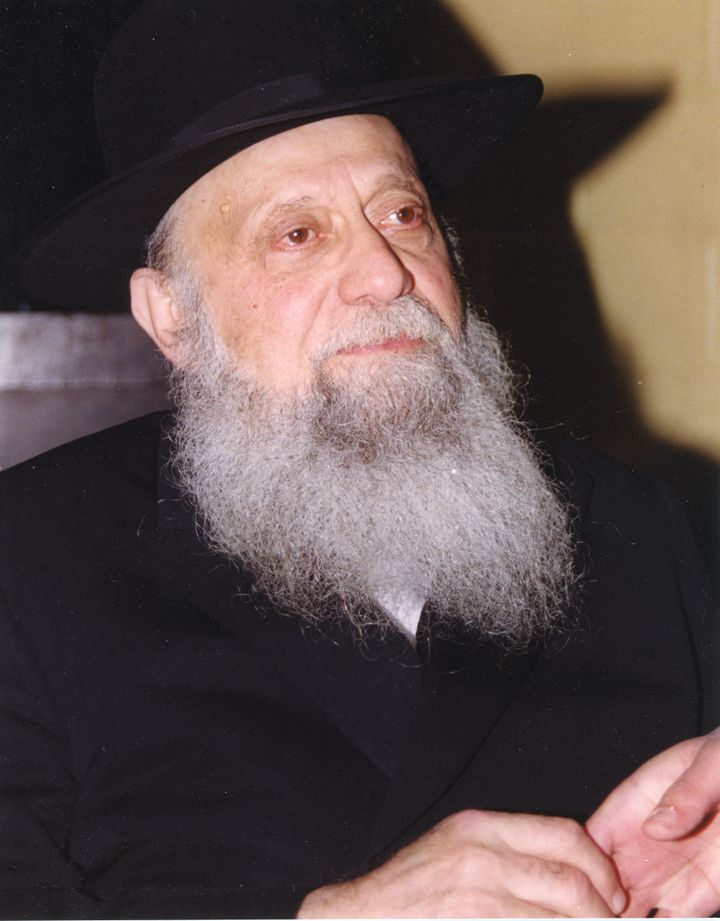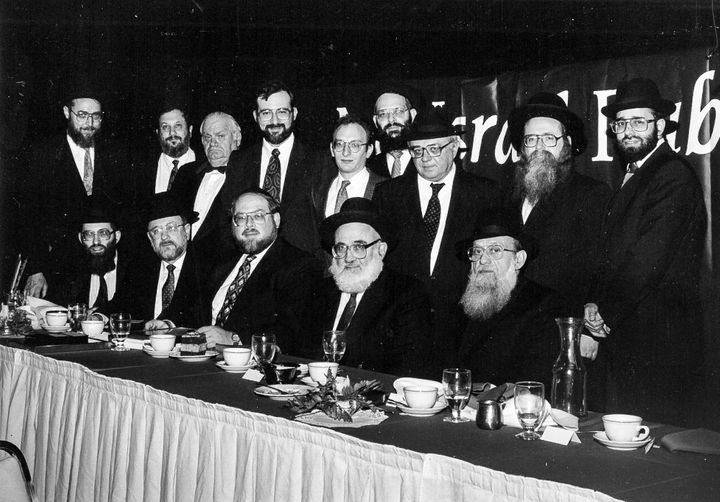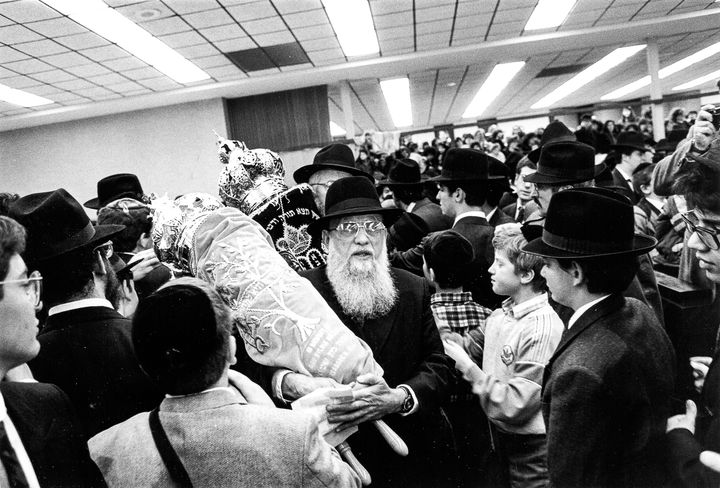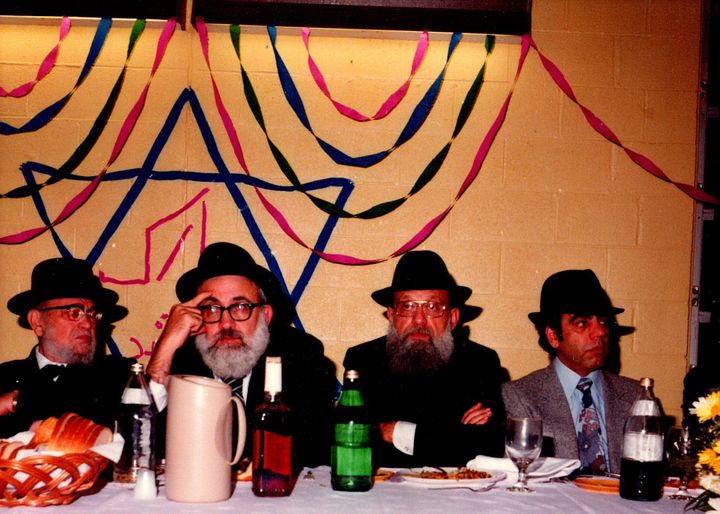Baltimore, MD - Nov. 17, 2020 - It is hard to imagine that this Thursday, 3 Kislev 5781 is already 20 years since Rav Kulefsky was niftar. As the many talmidim and people who knew him relate, it feels like a much shorter amount of time, if only because of his profound influence which continues to be so strong. Much of his background is by now well-known and can be found beautifully written in amazing detail by Rabbi Yechiel Spero in the newly released Artscroll biography about Rav Kulefsky. The key that I am sure we all are looking for, and for which Rabbi Spero does a remarkable job, is reliving the Geshmak! that Rav Kulefsky, as one of the first American born and bred gedolim, was able to impart to all of us. In fact, when the book was being worked on, one of the favorite titles that were suggested was simply “Rav Kulefsky – Made in the USA!” (Artscroll has their own criteria in titles however).
From his youth in St. Louis to the US Army, Torah Va’daas, Beis Medrash Elyon and finally Ner Yisroel, his life was a story we can all relate to and his lesson one that still resonates.
Nothing mattered more to Rav Kulefsky than being able to learn and teach Torah to his talmidim. His love for Torah knew no bounds. I was once standing with some talmidim talking to Rav Kulefsky, and someone asked him how he was able to remember so many details that were involved in many of his shiurim. He answered emphatically, “Do you remember how many children you have? Do you remember their names?” Indeed, Rav Kulefsky loved the Torah as if it were his own child.
His power of concentration was remarkable. Many times, as he walked home after delivering his shiur, accompanied by talmidim, he would be talking to them and answering their questions about the shiur. The short distance to his house would take him almost an hour. Even when it was inclement weather, he barely noticed that he had forgotten to open his umbrella and that it was raining or that it was freezing cold, because he was in the middle of learning.
One of the most famous, yet telling, stories about Rav Kulefsky’s love for Torah and power of concentration was that once, when the Yeshiva was learning the tenth perek of Nedarim, Rav Kulefsky was talking to his son-in-law, Rav Dovid Rosenbaum, shlit”a, during second seder about a difficulty he had for many years with a particular sugya. A short while later, Rav Rosenbaum received an urgent message that Rav Kulefsky had suffered a heart attack and was being rushed to the hospital. When Rav Rosenbaum entered Rav Kulefsky’s room in the ICU, Rav Kulefsky lifted the oxygen mask from his face and said, “Dovid, I thought of an answer!” Somehow, in middle of having a heart attack, Rav Kulefsky was able to think of an answer to the question that had bothered him for many years.
Rav Kulefsky was an expert in all areas of Torah and was not limited to the areas in which he said shiur. He served as the bochen for semicha in Ner Yisrael, as a dayan on the Baltimore Bais Din, and was a renowned expert on mikvaos. He famously would test candidates for semicha during car rides or at simchos when there was seemingly much going on around to offer distractions. Anyone preparing to be tested knew they needed to be prepared to have a clear mind even in such settings. One time, at the end of a semicha farher, he asked the talmid a particularly complicated and difficult yet relevant question. The talmid was stumped. He asked Rav Kulefsky that this question seemingly is not dealt with in any of the areas that the farher is supposed to cover. “Exactly” said Rav Kulefsky, “just because you are now a Rabbi, don’t think you know everything!”
His most important goal however, was to impart to his talmidim the sweetness of Torah – for if they taste the sweetness and enjoy it, they will always want more. When people asked him for brachos (blessings) for themselves or their children that they should be talmidei chachamim (Torah scholars), he would answer that being a talmid chacham is up to each individual. But he would always offer to give them a bracha that they should have “a geshmak in learning,” for that is the key to success.
He would stay up until the wee hours of the morning preparing his shiurim, going over them again and again, working out exactly how to say it in the most understandable and clear way, so the talmidim would be able to appreciate it and taste the “geshmak” and sweetness of Torah. Each shiur, besides being a masterpiece of Torah content, was a masterpiece in its delivery. Carefully crafted and deliberately planned, each point was said in an amazingly clear and precise manner.
In his later years, Rav Kulefsky suffered from a severe eye impairment which greatly diminished his vision. However, he refused to slow down. He acquired special lights, machines, and glasses that magnified images, which enabled him to learn, but at the same time made it a painstaking task to read through even a small portion of gemara. Yet, he would sit for hours upon hours, reading word by word, learning and preparing his shiur. Preparing his daily shiur was a seemingly hard enough task, but when he was appointed Rosh Yeshiva after the passing of Rav Yaakov Weinberg, zt”l, he even increased his workload, adding a weekly shiur klali and shmoozen to his already difficult schedule. Anyone who was privileged to witness the sight of Rav Kulefsky preparing or delivering a shiur in his later years couldn’t help but be awestruck by the incredible amount of ameilus (toil) and mesiras nefesh (sacrifice) for Torah.
Davening, too, presented an extreme challenge. Yet he would be careful to say every word of every tefila, even parts of davening that he did not know by heart, like tachanun, selichos, and kinos on Tisha b’Av. He would have the pages of the siddur enlarged to three 11x14 pieces of paper attached together, and he would stand in the bais medrash under a powerful lamp, slowly reading every word.
His love for his talmidim was profound. Rav Kulefsky was the originator of the now common minhag (practice) for talmidim to visit their rebbeim’s houses on Friday night. This allowed the talmidim to build an extremely close and lasting relationship with him. But his warmth was particularly pronounced towards talmidim who came from difficult situations, most notably the Iranian talmidim who had no parents to look after them. Rav Kulefsky became almost like a surrogate parent to them. He established a fund and spent much time and expended much energy looking after the Iranian talmidim to make sure they were taken care of in all areas of their lives.
But as much as he was the esteemed Magid Shiur and Rosh Yeshiva, his humbleness and ability to relate to everyone was remarkable. He was so normal! He was proud of his American heritage and did not hide the fact that he was an American boy from St. Louis, that he liked hot dogs or knew about American pastimes. Once a talmid was arguing with him about a certain point in shiur. The talmid was claiming to have a proof to his point. “I’m from Missouri” he said – “Show me!”
He loved children and would take the time to talk with any child whom he happened to come across. He would ask them what they learned that day in school, and if they replied, he rewarded them with a candy. On Chanukah, he would light his menorah in the hallway outside his apartment. Every night, the children in the building would gather around him and watch him light the neiros and then he would sing and dance with them. He would even give out chocolate Chanukah coins and candy.
Rav Kulefsky was an extremely loving father and zayde. He loved playing with his younger grandchildren and especially learning with the older ones. Each grandchild would have their own opportunity to learn with him. Towards the end of his life, he was once in the hospital and was very weak. I went with some of his grandchildren to visit him and we asked him how he was feeling. He was so weak he could barely answer. Then a grandchild told him of a question he had asked his rebbe in school that day. Immediately, his eyes lit up and he asked “Nu, so what did your Rebbe say?” The grandchild answered, “He said that the Maharsha asks it.” Rav Kulefsky lifted his hands in the air and exclaimed with unexplainable energy, “Now I feel better!”
He was a living example of how one is supposed to serve Hashem besimcha (with happiness) despite suffering. He frequently related the gemara in Yuma that even a poor person is required to learn Torah. The proof the gemara brings is from the great Tanna Hillel. Rav Kulefsky asked, “How is it possible to use the great Hillel as a proof? He was a Tanna – we are nowhere near his level of greatness?” He answered that the gemara is teaching us that, no matter what circumstances a person finds himself in, it is always possible to learn and grow closer to Hashem – everyone of their own level, but it is humanly possible. If Hillel, who was human, could do it, then we can do it also. This message was indeed the life and is the legacy of Rav Kulefsky. May his memory be a source of chizuk for all of us. TNZB”H.
Any additional stories, comments or pictures should please be addressed to rymkpublications@gmail.com.

